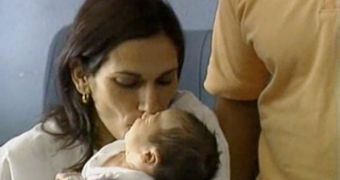Andres, the older son of a Spanish family, has a rare hereditary disease called Beta Thalassaemia, which prevents his body from producing the required amount of red cells that carry oxygen. His little brother, who was born only three days ago, has been genetically adapted in order to provide him a cure.
The family that lives in Cadiz, Spain, talked to the doctors and found out that a second baby, besides the obvious joy, would also ensure a cure for Andres, who was expected to die of his disease within 10 years at most if nothing was done. The physicians informed the parents of the possibility of a genetic pre-implant diagnosis treatment which would test whether the newly-born baby is free from any manifestation of the disease, as well as the transplant compatibility between the brothers. So, the family obtained the required approval from the National Commission for Assisted Reproduction and went on with the procedure that would get them a second son and a healthy first one.
This process, which is entirely prohibited in other countries, consists of a genetic examination of an embryo obtained through “in vitro” methods in order to determine whether it is healthy and a valid immunological match for a person requiring certain transplants, before it is placed in the uterus of the mother. After passing this testing stage, Javier was carried and born normally, as his umbilical cord was deposited in a blood bank for later usage, during the process of marrow transplant to Andres - the only thing that can save him, after all the previous attempts failed. The blood obtained from the cord will serve to make sure that the bone marrow transfer will force Andres' body to start producing more and healthier red cells and increasing the possibility of saving him.
But as this engineering technique becomes more and more advanced, one may wonder where the line between such life-saving techniques and the genetic modifications of, say, eye or hair color must be drawn and, furthermore, whether this will separate the rich who afford it from the poor.

 14 DAY TRIAL //
14 DAY TRIAL //